Support strong Canadian climate journalism for 2025
Stimo’on. Misoo. Gyne’es. Ye’ee. Uuux.
These are the names of the five species of Pacific salmon in Sm’algyax, the language of the Gitga’at First Nation on the northwest coast of British Columbia.
It’s a territory they've occupied for thousands of years, long before the names ‘pink,’ ‘sockeye,’ ‘chum,’ ‘chinook,’ and ‘coho,’ were conceived by scientists.
The salmon are the lifeline of the First Nation, says Gitga’at Councillor Cameron Hill. As the salmon go, they go.
“Salmon keep us connected to our language and culture,” he tells National Observer. “This whole ecosystem is our way of life. We depend on it so much that we can’t do without it.”
The Gitga’at, who live in the remote community of Hartley Bay, harvest 90 per cent of their food from the land, sea, rivers and streams. Their territory encompasses roughly 7,500 square kilometres of mainland, water and coastal islands, and is the permanent home of nearly 200 of the nation's members.
They have watched “disheartened” and “devastated” for decades, says Hill, as the rainforest’s wildlife has been ravaged by industry, climate change, trophy hunting, and weak environmental policy.
The great natural bounty of the region, known today as the Great Bear Rainforest, has never failed them before, but for the first time in their lives, they're worried it will.
The Gitga’at will not let the Great Bear Rainforest go down without a fight: As stewards of the territory, they will “fiercely defend and protect” their land and way of life, says Hill.
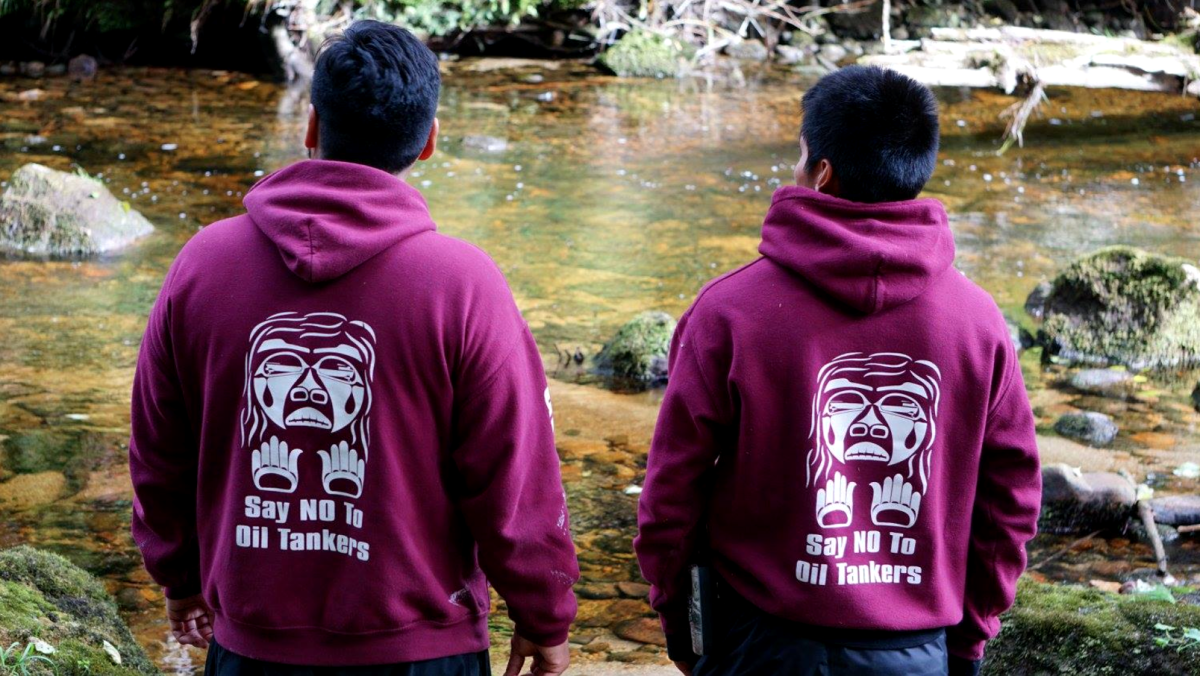
The beating heart of the rainforest
The Great Bear Rainforest is the largest coastal temperate rainforest on Earth, stretching 64,000 square kilometres from the northern tip of Vancouver Island to Alaska. It’s a rare and remarkable ecosystem roughly twice the size of Belgium, whose misty fjords, glassy waters, mossy mountains and thundering waterfalls paint a landscape of overwhelming natural beauty.
For thousands of years, the rainforest has sustained Indigenous populations as one of the richest and most productive ecosystems on the planet. Its spectacular circle of life includes grizzly bears, orcas, sea wolves, Sitka deer, and the elusive white Spirit Bear — a bear found nowhere else in the world.
And the heart of it all, says B.C. biologist Alexandra Morton, are the salmon.
“They are a blood stream, a power cord,” she says from her home in Echo Bay, where she has studied Pacific salmon and their habitat for more than 30 years.
“They feed everybody. If we pull them out, this coast will go dim.”
Salmon are what’s known as a ‘keystone species’ in the Great Bear Rainforest, Morton explains, a creature whose impact on an ecosystem is disproportionately large compared to its biomass.
Their carcasses are rich in nitrogen, sulfur, carbon and phosphorus, and when bears and wolves drag them through the forest, these nutrients are deposited in the soil and landscape. From there, scientists estimate they find their way into more than 190 species of the rainforest’s food chain — from moss to mink and seals to Spirit Bears.
Isotopes from salmon who return to spawn in the rainforest have even been found in its old-growth trees, says Morton. And the bigger the salmon run, the bigger the trees grow.
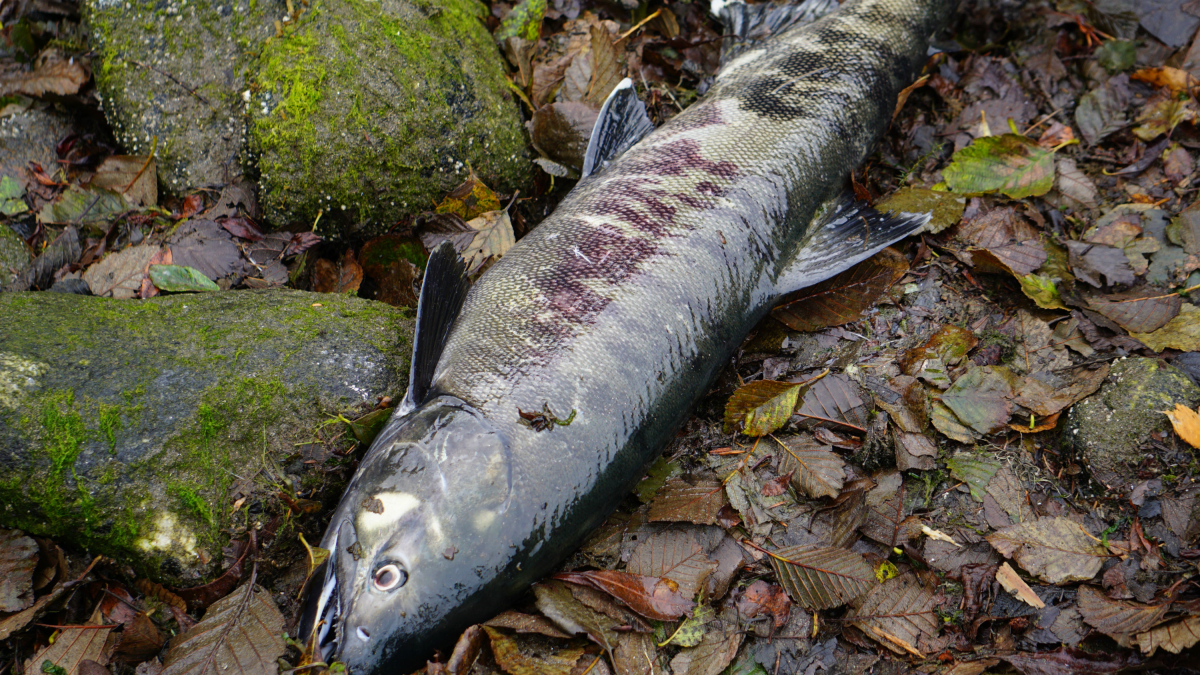
Warming waters wearing down salmon
But Pacific salmon — even those who spawn in the far away Great Bear Rainforest — are in trouble.
According to scientists from the federal Department of Fisheries and Oceans, exceptionally warm conditions partnered with extreme climate events like El Niño have compromised their diet by bringing smaller, less nutritious plankton into B.C. waters.
With them come migratory predators like shark and mackerel that feed on salmon — a dangerous combination of events that has resulted in lower river flows and higher water temperatures that make it difficult for the fish to spawn and survive.
Aaron Hill, an ecologist and director of the Watershed Watch Salmon Society in B.C., says the sight of a female salmon that has died before she can lay her eggs is “disheartening.” While some salmon runs thrive in B.C., others have reached the brink of extinction.
“Right now, the overall trend we’re seeing is that a lot of salmon runs in B.C. are being challenged by a changing climate,” says Hill, experienced from nearly 20 years of field observation. “Once you hit about 18 to 20 degrees, it starts to present serious challenges to the salmon.”
That in turn, he adds, weakens the resilience, density and diversity of salmon forests like the Great Bear Rainforest. It has a particularly strong impact on the ecosystem’s vulnerable and threatened predators, including grizzly bears and northern resident killer whales, whose diet mainstay is salmon.
Just south of the rainforest, a decrease in salmon stocks also threatens to obliterate their southern resident killer whale neighbours — a distinct species of orca whose population has dwindled to fewer than 90 members. The southern resident feeds almost exclusively on chinook salmon, which are declining rapidly across both the Salish Sea and Columbia River basins.
But it’s not only climate change that threatens salmon and the animals that rely on them for food — it’s liquified natural gas (LNG) projects, pipeline proposals, forestry, and fish farming as well.
As British Columbia inches closer to its provincial election on May 9, all four have been thrust into the spotlight as jobs, economy, and resource development dominate political conversations.
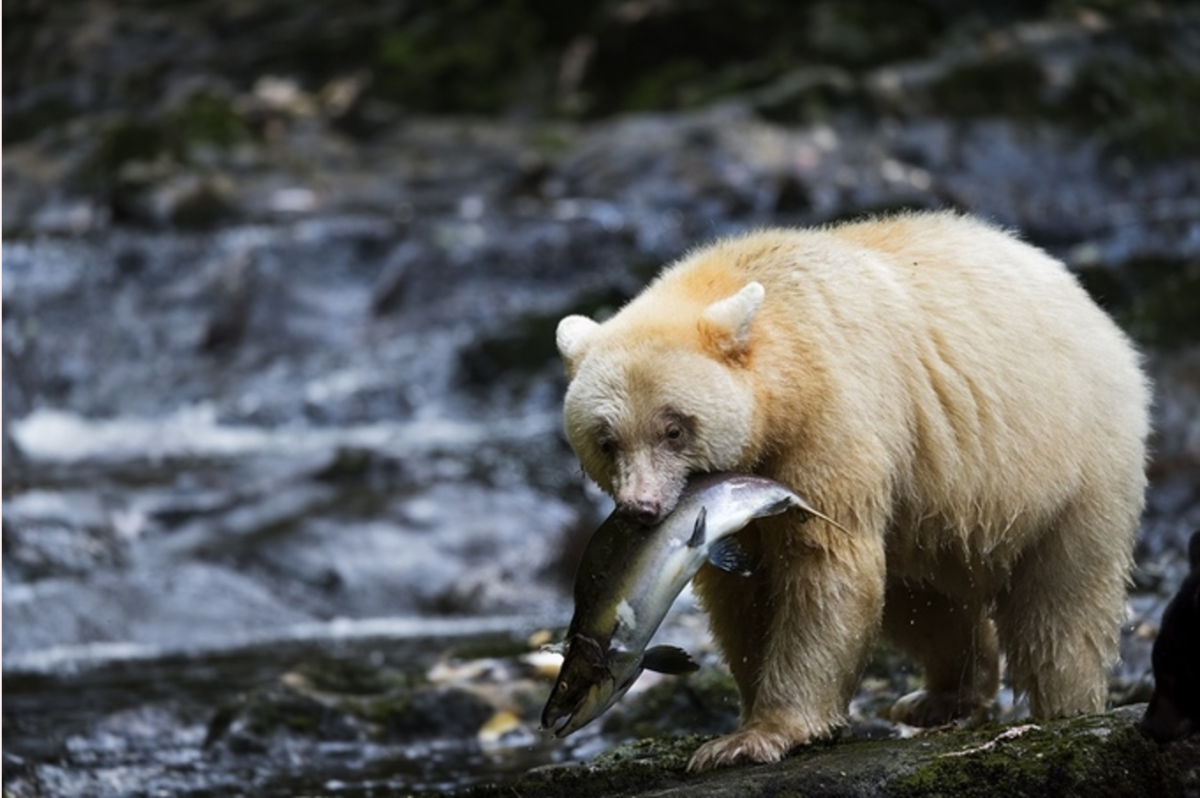
Can tankers tank the Great Bear’s wildlife?
BC Liberal Premier Christy Clark has vowed that the province will see its LNG heyday.
Despite low global oil prices and an increasing supply of natural gas that has depressed its value on the international market, she has campaigned in communities inside the Great Bear Rainforest, promising not to give up on LNG because “quitters can’t be leaders.”
The party did not respond to requests for comment on this story and the premier's office declined to comment. But the B.C. Ministry of Energy Mines has touted LNG as a source of clean energy, and an “opportunity to achieve significant GHG emissions reductions” while boosting provincial jobs and revenues.
The Canadian Association of Petroleum Producers (CAPP), Canada's oil and natural gas industry advocate, declined to say whether it felt LNG or crude oil projects could be done safely in the Great Bear Rainforest or on B.C.'s northwest coast at large. Instead, it said the onus is on governments to decide whether a project is "acceptable to proceed" in an email statement to National Observer:
"Any major development must undergo a rigorous environmental assessment prior to construction... We've seen several projects in northern B.C. meet the environmental requirements and gain approval."
As it stands, there are 19 LNG export proposals in various stages of development in the province, about two thirds of which include infrastructure or shipping routes that would plough through or beside the Great Bear Rainforest.
The $36-billion Pacific NorthWest LNG project, for example — already given the green light by the B.C. and federal governments — aims to build a natural gas pipeline that would cut straight through the rainforest to get to a proposed terminal on Lelu Island.
This will bring it right next door to Flora Bank, a sensitive and ancient underwater habitat in northwestern B.C. where new research indicates all five species of Pacific salmon feed and grow for weeks at a time.
According to Pacific NorthWest’s consultants, Flora Bank is a temporary stop for juvenile salmon, not a rearing site. Federal conditions placed on the project also require the company to monitor the area, and ensure that its marine terminal does not result in adverse effects on Flora Bank and its salmon. If constructed, the project is expected to generate roughly $2.5 billion in tax revenue for governments and 4,500 jobs during peak construction.
But according to whale researcher Janie Wray, LNG infrastructure — and the fracking that accompanies it — pose an enormous risk to wildlife that in many cases, cannot be mitigated. Add in the tanker traffic for its overseas shipments, she says, and it could spell catastrophe.

“When these tankers go through, the wave action hitting the shoreline has got to be having an effect on the environment forage fish may be spawning in,” she explains. “There’s just so many factors to think about beyond the incidence of a spill, which is devastating no matter what.”
To reduce the risks of a disastrous oil spill in the Great Bear Rainforest, the federal government is enacting a crude oil tanker moratorium for B.C.’s north coast. But there is little legislation to protect the ecosystem from LNG tankers, whose most egregious impact may be acoustic pollution, says Wray.
Wray, stationed at Cetacea Lab in the heart of the Great Bear Rainforest, has been listening to the songs of humpbacks, orcas, and fin whales for more than 20 years. They return to the region annually, she says, likely because they know the waters to be safe, quiet, and full of prey.
Whales use vocalization not only to hunt and herd their food, she explains, but also to court one another, play, and navigate through the Great Bear’s dark waters. Other reasons for their melodic cries are “still a beautiful mystery,” she says, describing resident orcas as “chatty,” and humpbacks as having “a lot of culture.”
Experts agree that if tankers start roaring through this habitat, the noise disturbance would seriously disrupt whale communication, resulting in symptoms ranging from deafness to death. They would also dramatically increase the odds of a whale-vessel collision, says Wray: tankers can’t turn on a dime to avoid whales, which have a habit of surfacing unexpectedly.
And while landmark conservation agreements protect much of the terrestrial habitat in the Great Bear Rainforest, she says the lack of protection for its marine inhabitants is “embarrassing.”

Critical habitat for whales
“There’s no coastline like this on the planet,” she insists. “I think we need to seriously think about setting aside an area along the coast of B.C. that is ‘critical habitat for whales.’”
Under the federal Species at Risk Act, a critical habitat designation could help prevent large-scale industrial development that produces intense noise, contaminates or alters the habitat, as it has done for Canada’s North Atlantic right whale.
It’s especially important for the southern resident killer whale, which hunts just below the Great Bear Rainforest, as it faces a seven-fold increase in tanker traffic through its favourite feeding grounds.
The proposed Kinder Morgan Trans Mountain expansion — whose Alberta-B.C. pipeline and crude oil tanker traffic has already been approved by governments — will almost certainly drive them into extinction, says Jason Colby, a University of Victoria professor and expert on orca-human conflict.
It’s impossible to claim you are serious about saving the species, he adds, if you also support projects that result in increased tanker traffic through their habitat.
“Those are absolutely, fundamentally, contradictory positions,” he says in an interview. “We need to ask ourselves what this place will look like, and what our identity is if we lose the southern resident killer whale.
“What will have we lost in our regional and cultural identity, along with our tourist economy?”
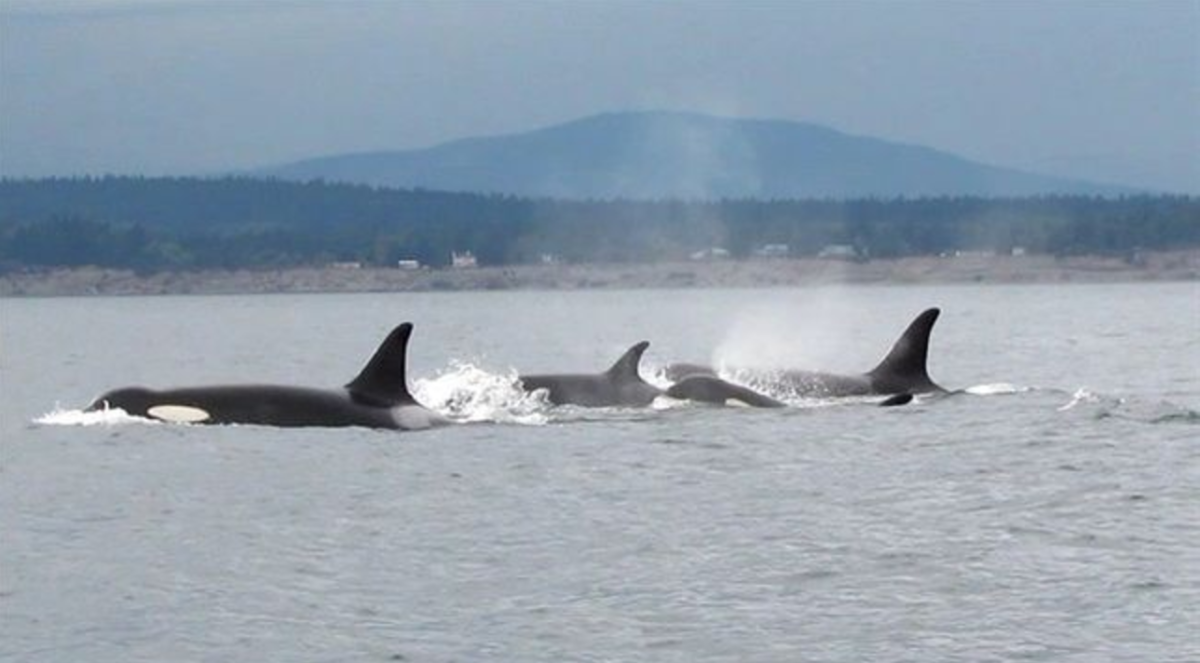
An issue of jurisdiction
When it comes to the matter of marine protection, says Colby, it’s important to note that the B.C. government has limited powers. Oceans fall under the jurisdiction of the federal government, which in addition to a crude oil tanker ban for the north coast, has announced a new Oceans Protection Plan to help protect whales from tanker traffic.
According to the plan, researchers will locate and track marine mammals in high tanker traffic areas and relay that information to mariners. They will identify and assess the most pressing local environmental issues, along with the effectiveness of existing mitigation measures.
This plan would be in place by the time Trans Mountain’s tankers roll through, as will the company's own Marine Mammal Protection Program, which is due to the federal National Energy Board regulatory agency three months before the pipeline starts its operations.
None of that will change the fundamental issue facing the whales, says Colby: a massive increase in tanker traffic is bound for their hunting grounds, carrying either oil or LNG.
While it may not have jurisdiction over marine protection, the B.C. government could have commissioned more intense study not only of endangered whale populations, he argues, but the reason their favourite salmon stocks are declining as well. That would strengthen B.C.'s position in lobbying the federal government for increased protection for marine wildlife, he says, and better equip them to make decisions on the LNG projects to come.
“If you lose healthy salmon runs, you’re not just talking about lost fishing jobs, which has been happening for a long time,” he tells National Observer. “You’re talking about profound ecological change in the water sheds, rivers and forests.”
As it stands, approval of both the Trans Mountain expansion and the Pacific NorthWest LNG project has been taken to court by local First Nations, who say they threaten vital salmon runs throughout their traditional territory.
Meantime, if governments want to start protecting this keystone species — and by extension, the entire Great Bear Rainforest — salmon aficionado Alexandra Morton recommends starting with a crack down on net-pen fish farming.
Farmed salmon a danger to wild Pacific stocks
According to the BC Salmon Farmers Association, there are 109 salmon farms spread throughout the B.C. coastline. Dozens are located in the Great Bear Rainforest, raising Atlantic salmon from Campbell River to Klemtu, home of the Kitasoo/ Xai’xais First Nations.
In total, says the association, these farms occupy half a per cent of B.C.’s coastal waters and at each and every one of them, fish hygiene and safety is a top priority.
“Pen nets are cleaned regularly from top to bottom,” says the unnamed narrator of a promotional video on the association’s website. “Operators are consistently striving to improve farming practices, and underwater monitors guard against overfeeding, ensuring a lower impact on the ocean floor and a cleaner, safer habitat for the fish.”
Oversight of the industry — which generates more than $1.1 billion for the province every year — is a shared responsibility of the B.C. and federal governments. In order to keep their licenses, salmon farmers must adhere to a strict set of rules designed to protect wild salmon by minimizing their contact with farmed fish and stopping the spread of disease and bacteria.
But according to Morton, these measures are failing. While the threat of commercial fishing has largely been extinguished, she says deadly viruses have been detected in B.C.’s open-net cage farms that can make wild Pacific salmon extremely sick.
Compounded with the warming waters and ocean acidification brought on by climate change, she says net-pen farming may push some Pacific salmon runs to the breaking point.
Morton and her lawyers at Ecojustice have taken the federal government to court for allowing the transfer of farmed salmon that have not been tested for a dangerous virus into underwater pens in the wild — a practice they say is illegal under federal fishing regulations.
“The sea lice and the viruses coming from the farms are an enormous threat to them,” the biologist explains. “There is no place in the world that wild salmon and farms are thriving together. It’s like two worlds colliding.”
In the meantime, she says, the province’s prioritization of the aquaculture industry has left wild salmon in the lurch.
In 2012, a $36-million federal inquiry into the decline of Fraser River Sockeye made eight recommendations to help the B.C. government protect its salmon. At the time, the Ministry of Agriculture “accepted the intent” of most of those measures, but did not commit to implementing them.
It did, however, commit to working with the federal government to become 90 per cent compliant with Riparian Areas Regulation, and not to issue any new tenure agreements for net-pen salmon farms in the Discovery Islands until 2020.
What the B.C. government should do now, says Morton, is tell local salmon farms to finish growing their current underwater stock before revoking their tenures. It could then support salmon farmers, she adds, in developing sustainable land-based aquaculture that will keep the fish away from wild salmon on their way to spawning streams in the Great Bear Rainforest.
The B.C. Ministry of Agriculture declined to comment during the provincial election campaign period, but provided a publicly-available list of investments and programs that support Pacific salmon and healthy salmon farms.
For its part, the federal government has successfully implemented more than 30 of its own recommendations from the Cohen Commission, and is working towards completing all 75.
“Salmon are perfect at what they do,” says Morton. “All we need to do is figure out where we are in their way, and strategically get out of their way to let them flow back and forth between the rivers and oceans.”

The thrill of the kill
For the Great Bear Rainforest’s coastal grizzly bears, a healthy salmon population is essential. Formidable hunters on land and water, during the salmon run, they obtain up to 90 per cent of their total annual dietary requirements, laying down the fat they need for hibernation.
But B.C.’s grizzlies — designated as ‘vulnerable’ by the Conservation Data Centre and a species of ‘special concern’ by the federal Committee on the Status of Endangered Wildlife in Canada — require more than robust salmon stocks to thrive throughout the province.
Logging near bear dens in the rainforest is off-limits under the 2016 Great Bear Rainforest Order, but elsewhere in B.C., forestry and road construction continues to encroach on the places they call home. Grizzlies have been eliminated or are currently threatened in 18 per cent of the province, according to the David Suzuki Foundation, through a dangerous mix of habitat loss, salmon collapse, climate change, and human conflict.
Despite these dwindling numbers, the B.C. government continues to allow the controversial practice of hunting them for sport — a practice opposed by more than 90 per cent of B.C. residents, according to polls by InsightsWest. Premier Clark has previously received honours from the pro-trophy hunting organization, the Guide Outfitters Association of B.C., and in advance of the election this year, Canadian and American members of Safari Club International reportedly banded together to raise $60,000 to help keep the B.C. grizzly hunt alive.
If elected, both the BC NDP and BC Green Party have promised to ban grizzly hunting for pure sport by requiring hunters to collect the animal’s meat. The BC Liberals have vowed to ban trophy hunting in the Great Bear Rainforest alone, and continue a “science-based approach” everywhere else in the province.
According to provincial documents, a science-based approach includes restricting the age and sex of bears that can be killed and banning the hunt in grizzly populations of less than 100 bears.
But the parties’ pledges are too late for the grizzly bears this year. The 2017 hunting season has already begun, says Neil Shearer, a trophy hunting opponent, Great Bear Rainforest tour guide and administrator of the Stop the Grizzly Killing campaign.
Every year, an average of 329 grizzly bears are killed by licensed hunters out of an estimated population of 15,000, based on figures from the B.C. Compulsory Inspection Database.
The Great Bear Rainforest’s grizzlies are particularly vulnerable, says Shearer — over the years, he says coastal bears have learned not to perceive humans as a threat and don’t know enough to run when they see them.
During the salmon run, Shearer says he has taken brightly-dressed tourists within 100 metres of grizzly bears fishing in streams without the predators moving a muscle. This makes hunting them more like “shooting cows in a field,” he adds, than slaying a dangerous predator at the top of the food chain — a bragging right that motivates many trophy hunters.
“Humans have been spending time in those places for thousands of years, gathering fish in the same creeks where bears are,” he says. “They’ve become adapted to our presence and in a sense, their guard is down. Those animals are at significant risk of being shot.”
And as a matter of biology, the Committee on the Status of Endangered Wildlife in Canada has determined that grizzly bears are at a high risk of population decline in human-dominated landscapes. They have low reproduction rates, are slow to disperse across landscapes, and females won’t give birth to cubs unless food stocks are plentiful.
The same holds true for bears in the Great Bear Rainforest, says Shearer, and trophy hunting adds completely unnecessary fuel to the fire that’s keeping their numbers from growing.
The BC Wildlife Federation, a conservation organization that supports a “sustainability”-themed approach to the trophy hunt (requiring hunters to harvest the meat of the bear), did not respond to requests for comment.
Of political pledges to end the controversial practice, Doug Neasloss, chief councillor of the Kitasoo Indian Band in Klemtu, says he’ll believe it when he sees it. Neasloss played a critical role in lobbying the provincial government to ban the trophy hunt, and was part of First Nations leadership who banned it on their territory in the Great Bear Rainforest in 2012.
“I don’t feel comfortable until we have something in writing,” he told local media when the promises were released. “I’m always a bit skeptical. Election time is obviously when people make a lot of promises.
“If we can hold their feet to the fire and make sure we end it… There’s a lot of conversations that have to happen.”
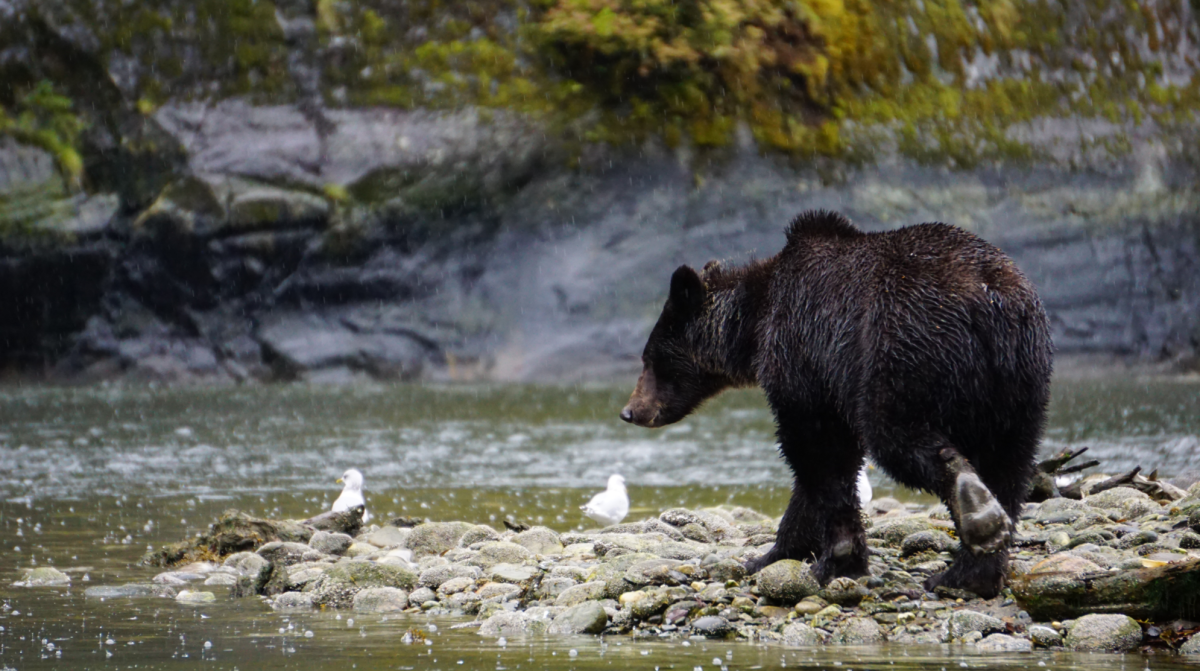
A future for the Great Bear Rainforest
From salmon to Spirit Bears, the story of the Great Bear Rainforest and the magnificent creatures who inhabit it, is remarkable.
Last year, First Nations, loggers, conservationists, and the B.C. government announced a groundbreaking agreement to permanently protect 85 per cent of it from commercial logging — an environmental multi-stakeholder negotiation so complex, it knows no equal.
Loggers and activists were forced to resolve bitter, historical conflicts, while First Nations seized unprecedented power to create a sustainable future for their people and territory. The provincial government put aside unilateral methods of land-use governance in favour of creative approaches to collaborative conservation.
Over 20 years, the campaign touched thousands.
Despite this wonderful environmental and political success however, Jens Wieting of Sierra Club BC says the provincial and federal governments are pursuing a course of action that could permanently harm the rainforest. If they continue to support major greenhouse gas-emitting energy projects, he argues, they are contributing to the climate change impacts that put its salmon, bears, and whales at risk.
“We need government leadership for strong climate action and we need it now,” Wieting tells National Observer. “Climate change means that species will be under pressure and migrate to adapt to a warmer climate.
“So whether we look at salmon or bears or marbled murrelets, many of these species will seek to move to higher altitudes or north… If we build these new projects, we will make it even harder for them to survive climate change because they will have too little room to migrate.”
Temperate rainforests like the Great Bear Rainforest cover less than one per cent of the planet's landmass, he says, but store more carbon per hectare than anywhere else in the world. The Great Bear cannot be looked at in isolation, he explains — if its ecosystem is compromised, the impacts will be widespread.
For the Gitga’at First Nation in Hartley Bay, Coun. Cameron Hill says any changes would be devastating.
“So much depends on the life cycle of the salmon and we as a people have really come to realize and know as fact that when anything in the food cycle is disrupted, or anything in the food chain is disrupted, something will suffer.
“If the salmon were to not come back… the whole north coast ecosystem would fall apart.”
Editor's Note: This report is possible thanks to the generous support from our readers and subscribers, who backed the State of the Animal fundraising campaign in April 2017. If you’d like to see more reporting like this, please support our journalists by becoming a subscriber.

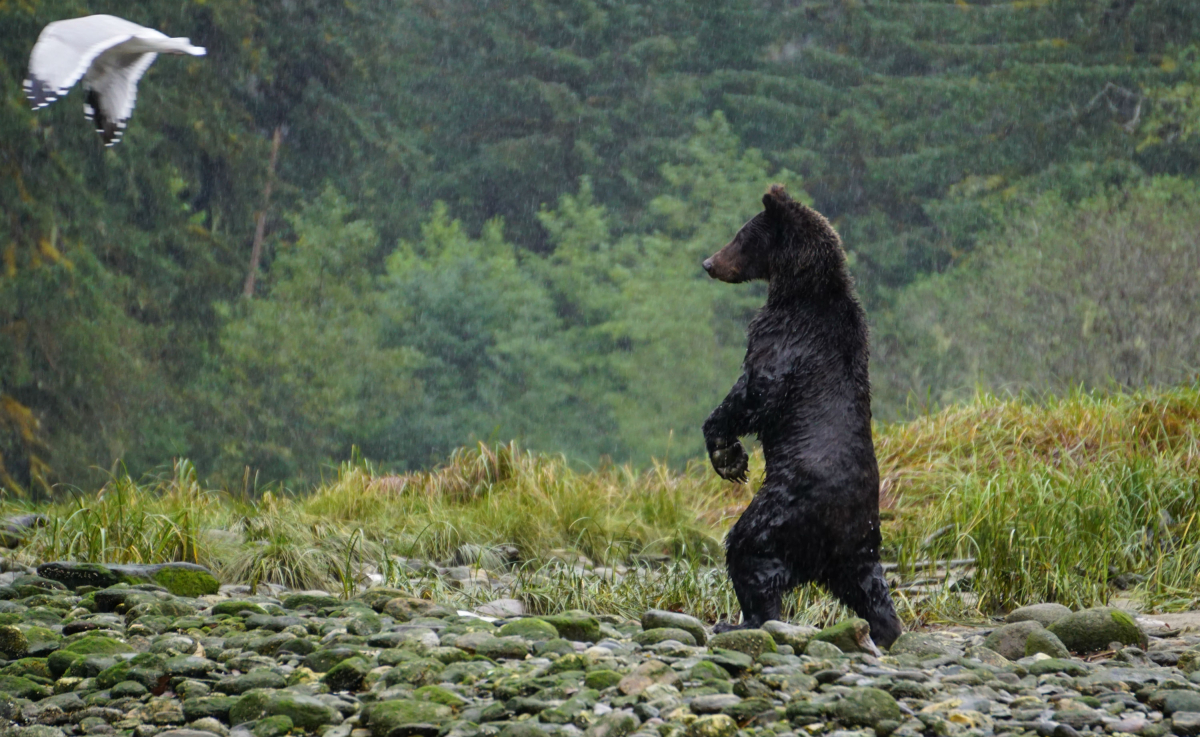

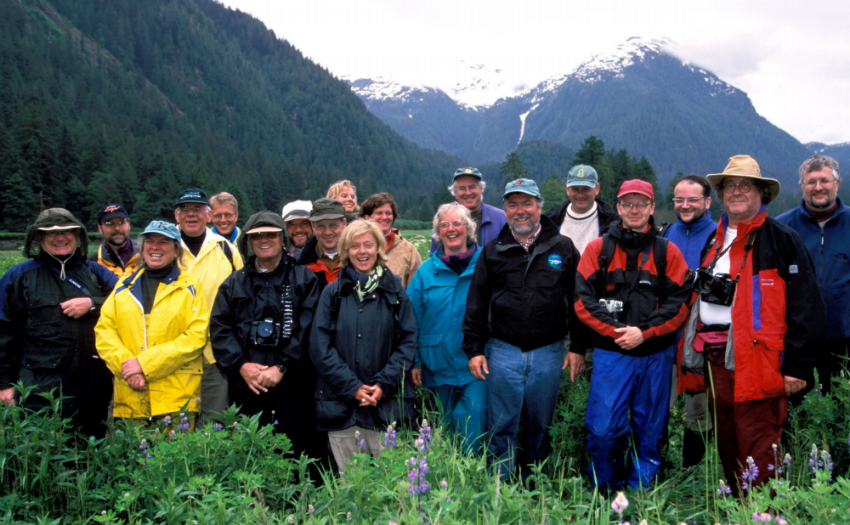
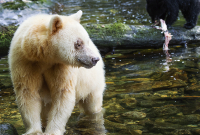

Comments